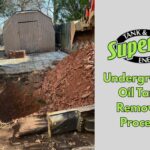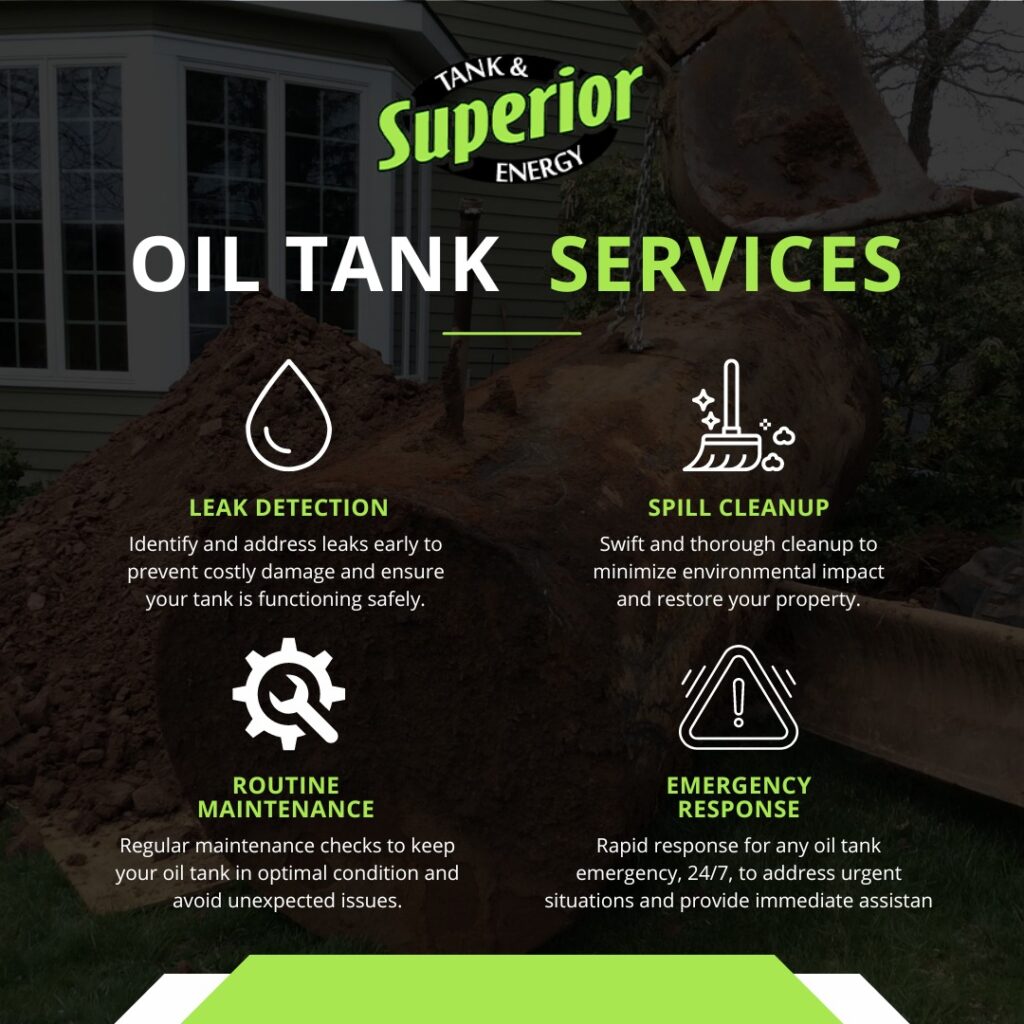
- Posted by: Superior
- 0 Comments
Tips for Locating an Underground Oil Tank
How to Locate an Underground Oil Tank
Are you shopping for a new place to call home or about to begin serious renovations on your property? If the building in question uses oil heat now or has ever used it in the past, there is a chance of a buried fuel tank somewhere on the property. Buried fuel oil tanks may not seem like a big issue, especially in more rural areas, but they can be a nightmare for your whole neighborhood as they age and rust.
Leaking oil from these old steel tanks can contaminate your water supply, seep through your basement walls and floor, and poison local wildlife. Some fines for oil spills range in the tens or even hundreds of thousands.
In order to ensure you can proceed with signing on that dotted line or beginning construction, it’s vital to make sure there is not a buried fuel oil tank lurking out of sight on your property. If you suspect you’re dealing with one, all hope is not lost. Use this guide to find it and book tank removal ASAP — or avoid dealing with oil contamination many years down the line as the future owner of the property in question.
Cross-Reference Your Information
The first place to check for a buried oil tank isn’t on your property — it’s in the paperwork about the property. Search through the paperwork you received when you began paying for the home. If you spot anything about oil heat, or you happen to know the property relies on oil heat, consider this a red flag that a tank may be right under your nose.
Don’t only take the seller’s word for it when it comes to oil tanks. Many states have strict regulations against old oil tanks being left in the ground. Unfortunately, in an attempt to cut corners and avoid paying more than the bare minimum, some unscrupulous home sellers leave buyers in the dark about buried tanks. In order to avoid being swindled out of your hard-earned money, search through your township’s municipal records about the property. Much of this information is available to the public with a little research. Don’t be afraid to ask the seller if they know of a tank on the property — and don’t take “I don’t know” for an answer.
A useful resource to check is the Environmental Protection Agency’s “UST Finder” database. The EPA is an agency that serves the entire United States, so its database is quite comprehensive. There are also private agencies that track oil tanks and their location as well.
Check Oil Company Records
If your property has any kind of oil tank, there is an almost 100% chance that the tank has needed a refill, replacement part, or even emergency oil tank repair. Investigate records of delivery of heating oil to the property. Records from oil companies are often made available to potential homebuyers for this specific reason. In some cases, the delivery might have been a simple aboveground tank refill or something else innocuous; but in others, the oil might have gone into that buried tank which is now rusting and leaking right underneath your lawn.
Look For Big Signs
Some big signs to look out for that you may have a buried oil tank on your property include:
Visible Vent Pipe
An oil tank’s vent pipe is about 1-2 inches in diameter and is made of galvanized metal. It often has a mushroom or bulb-shaped cap covering it up. Seeing one of these vent pipes sticking up on the lawn or close to the building’s foundation is a red flag you may have a buried oil tank.
Oil Fill Pipes
In order to fill the underground oil tank, the previous owner would have needed some kind of access to the fill pipes. There may still be a way to spot these pipes and detect an oil tank. Around areas such as the foundation of the property and the curbs, watch out for pipes disappearing into the ground. You may not see any pipes at all, even if there is a tank on your property. This is because some deceptive sellers conceal the pipe with metal cans or shrubbery or cut the fill pipe off so it can’t be noticed.
Look For Small Signs
Copper Wiring
If you see copper wiring, especially in bundles, near the furnace, the home likely relies on oil heat. Inspect where this oil is stored and know that even with an aboveground tank in place, copper wiring may indicate a buried tank is still on the property. In order to sell the property, a lender will likely require the system to be inspected, but that doesn’t mean you know the entire history of the furnace and where its oil was stored.
Oil Stains
Oil stains in the basement may be a sign of an old house that needs some TLC — or they may be a sign that there’s an oil tank leaking through your walls and floor. If you spot oil stains, get in touch with home inspectors right away, especially if you notice a cut in the basement flooring or other area that could expose your home’s foundation to the old waste oil.
Your Tank Removal Specialists
Have you spotted evidence your property may be playing host to an unwelcome guest in the form of an old oil tank? Don’t sweat it; call Superior Tank & Energy for tank removal services! We serve the community year-round, taking care of removing hazardous tanks, refilling and repairing functional and useful tanks, and performing snow removal in Bucks County, PA, among many other services! Get in touch with us today, and let us make your old oil tank a thing of the past.






Recent Comments